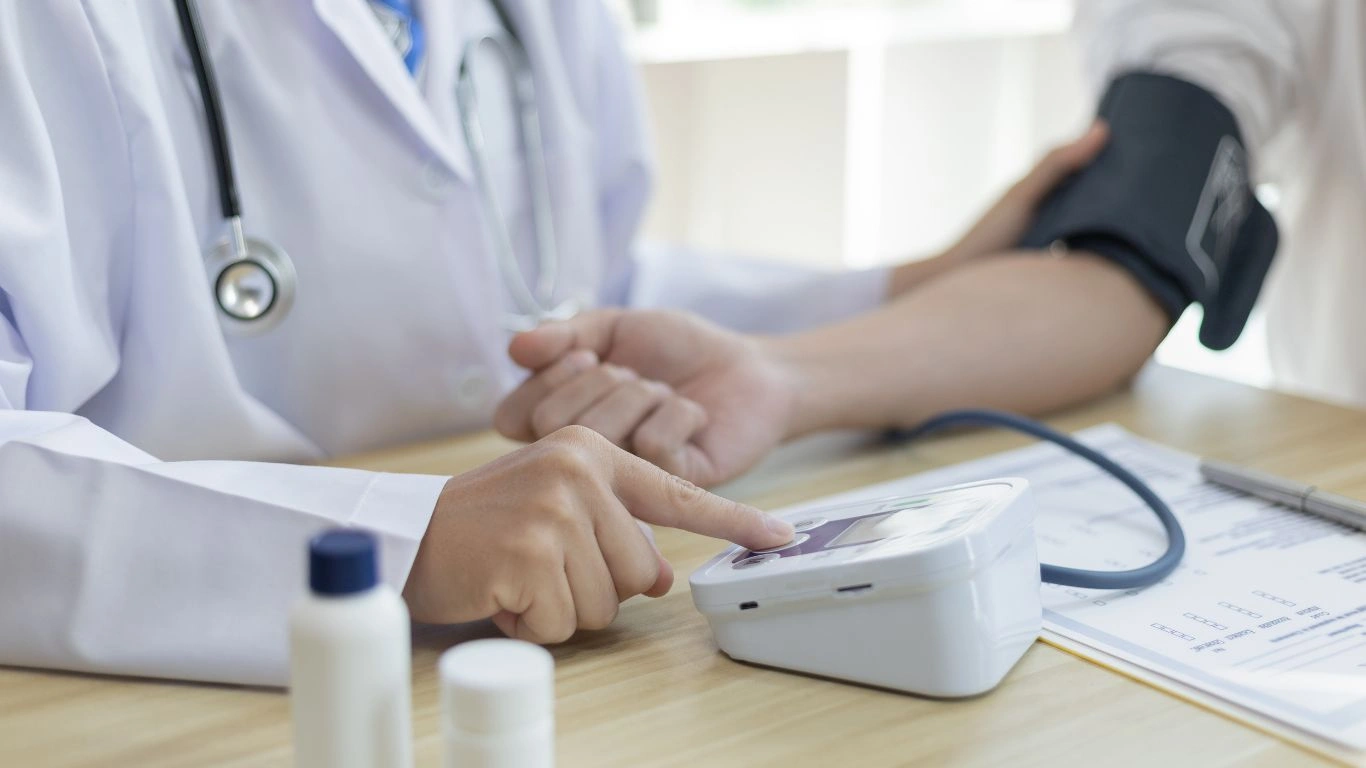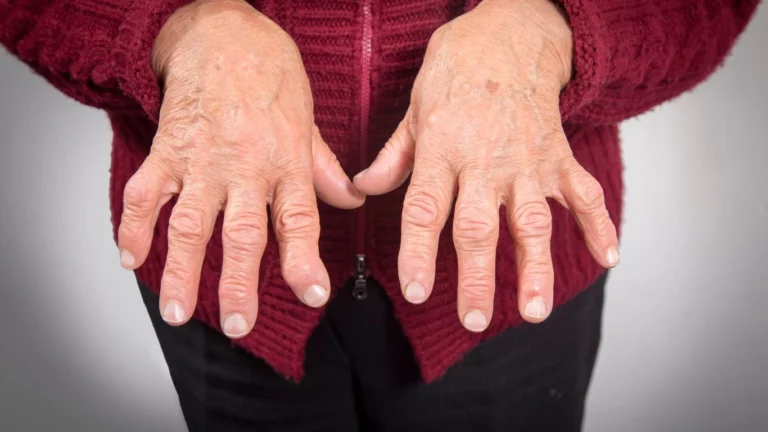Top Low Sodium Pantry Staples for Hypertension: Heart-Healthy Choices
As an Internal Medicine Physician with a particular focus on hypertension management, I’ve seen firsthand how vital dietary changes can be in controlling high blood pressure. One of the most common recommendations I make to my patients is reducing their sodium intake, which can have a profound effect on their health. But, let’s be honest—keeping track of sodium levels in your food isn’t always easy, especially when so many processed and pre-packaged foods are loaded with salt. That’s why today I want to talk about something I believe is incredibly helpful: low sodium pantry staples for hypertension. By filling your pantry with these heart-healthy ingredients, you’ll not only manage your blood pressure more effectively but also improve your overall health and wellbeing.
Why Low Sodium Matters for Hypertension
Before we dive into the specific pantry staples you should have on hand, let’s take a moment to discuss why sodium is such a big deal when it comes to hypertension. Sodium, in simple terms, is a mineral that plays a role in regulating fluid balance in your body. However, when you consume too much sodium, it can cause your body to retain excess fluid. This, in turn, puts more strain on your heart and blood vessels, leading to high blood pressure. Over time, this can contribute to more serious health conditions, such as stroke, heart disease, or kidney problems.
Reducing your sodium intake is one of the most effective ways to lower your blood pressure naturally. The American Heart Association recommends limiting sodium intake to 2,300 milligrams a day or ideally 1,500 milligrams for those with hypertension. But you don’t have to take drastic steps or starve yourself of flavor! The key is to swap out high-sodium foods with heart-healthy alternatives. And that’s where these low sodium pantry staples come into play.

Essential Low Sodium Pantry Staples for Hypertension
1. Canned Beans (Rinsed)
If you’re looking to stock up on affordable, nutritious, and low-sodium options, canned beans are a fantastic addition to your pantry. Beans are packed with fiber, protein, and essential minerals like potassium, which is crucial for blood pressure regulation. The only catch? Many canned beans come packed in salty brine. But don’t worry—there’s a simple solution. Just rinse the beans thoroughly under cold water to wash away much of the sodium, and you’ve got a great low-sodium food ready to be used in a variety of dishes.
Some excellent options to keep on hand include black beans, kidney beans, chickpeas, and pinto beans. These beans can be used in everything from soups and stews to salads, or even mashed as a base for veggie burgers. Plus, they’re easy to store and have a long shelf life, making them a pantry staple you’ll always want to keep stocked.
2. Whole Grains: Brown Rice and Quinoa
Whole grains like brown rice and quinoa should be essential components in any hypertension-friendly pantry. Both of these grains are high in fiber, which helps regulate blood sugar levels and contributes to heart health. Quinoa, in particular, is a superfood that is also a complete protein, meaning it contains all nine essential amino acids. Additionally, unlike refined grains, whole grains have a much lower glycemic index, which helps prevent blood sugar spikes that could negatively affect your blood pressure.
While whole grains can be a bit higher in sodium when processed (especially instant varieties), buying them in their whole or raw form ensures they are low in sodium. Simply cooking them in water or low-sodium broth gives you control over the final dish. These grains are versatile, too—you can use them as a side dish, in grain bowls, or even add them to salads for a satisfying, nutritious meal.

3. Low Sodium Broths and Stocks
For anyone who loves making soups, stews, or sauces, low sodium broths and stocks are a must-have. Regular broths can be loaded with salt, which quickly adds up and can significantly affect your daily sodium intake. Fortunately, there are a number of low-sodium versions available on the market, and many are just as flavorful as their high-sodium counterparts. If you prefer to make your own, it’s easy to simmer vegetables, herbs, and lean proteins to create a rich, flavorful broth without any added salt.
Low sodium broths are excellent for making soups, stews, and even cooking grains like rice and quinoa. They’re also perfect for sautéing vegetables, which adds a burst of flavor to any dish without the need for excess salt. Look for broths labeled “low sodium” or “no salt added” to ensure they meet your dietary needs.
4. Fresh Herbs and Spices
One of my favorite tips for my patients who are cutting back on sodium is to use fresh herbs and spices. They are a wonderful way to enhance the flavor of your dishes without the need for salt. Herbs like basil, oregano, cilantro, and parsley can be added to almost anything, from salads to sauces, to create bright, fresh flavors. Spices like turmeric, cumin, paprika, and coriander are also excellent additions to your pantry for hypertension management.
Not only do herbs and spices give you flavor without sodium, but many of them also have additional health benefits. For example, turmeric contains curcumin, a compound known for its anti-inflammatory properties, while cayenne pepper can help boost metabolism. So don’t be afraid to get creative in the kitchen—experiment with different combinations of herbs and spices to find your favorite low-sodium seasoning mix!

5. Unsalted Nuts and Seeds
Another great addition to a low-sodium pantry is unsalted nuts and seeds. Nuts like almonds, walnuts, and pistachios, as well as seeds such as chia seeds, flaxseeds, and pumpkin seeds, are all packed with healthy fats, fiber, and antioxidants. These nutrient-dense snacks not only help keep your heart healthy but also help you manage your blood pressure.
When choosing nuts and seeds, make sure to go for the unsalted versions to avoid added sodium. You can snack on them as is, add them to smoothies, or sprinkle them on top of salads for added crunch and nutrition.
More Low Sodium Pantry Staples for Hypertension
6. Frozen Vegetables
Fresh vegetables are always a top choice for anyone looking to lower their sodium intake, but I get it—it’s not always practical to buy fresh produce every week, especially if you have a busy schedule. That’s where frozen vegetables come in. They are just as nutritious as fresh ones, and they often have a much longer shelf life. Plus, they come without any added salt, which is essential for hypertension management.
Frozen vegetables like spinach, broccoli, peas, and cauliflower are great options to keep in your freezer. They can be quickly steamed or sautéed and tossed into a variety of dishes, from stir-fries to casseroles. You can even add them to soups for an extra dose of nutrients. Whenever you’re in a pinch, frozen veggies are your go-to solution for a heart-healthy meal.

7. Low Sodium Tomato Products
Tomatoes are a wonderful source of potassium, which is one of the key nutrients needed for managing blood pressure. However, many tomato-based products, like sauces and canned tomatoes, can be loaded with sodium. Thankfully, there are low sodium versions of these products available, and they’re just as versatile in the kitchen!
Low sodium tomato products, such as tomato paste, crushed tomatoes, and tomato sauce, are fantastic pantry staples for anyone looking to control their sodium intake. These products can be used in a wide variety of dishes—from pasta sauces to soups, stews, and even homemade pizza. When buying tomato products, look for labels that say “low sodium” or “no salt added” to ensure they fit your dietary needs.
8. Non-Fat or Low-Fat Dairy Products
Dairy products can sometimes get a bad rap when it comes to heart health, but not all dairy is created equal. Non-fat or low-fat versions of products like milk, yogurt, and cheese are much better choices for managing hypertension compared to their full-fat counterparts. They provide essential calcium and protein without the added saturated fats that can contribute to cardiovascular disease.
When selecting dairy products, it’s important to also pay attention to the sodium content. Some cheeses, for example, can be quite high in salt, so it’s a good idea to choose options that are labeled low-sodium. Greek yogurt is a great addition to your pantry, as it can be used in a variety of ways: as a snack, in smoothies, or as a creamy base for sauces and dressings.

9. Low Sodium Sauces and Condiments
If you’re anything like me, you probably love adding a bit of extra flavor to your meals with sauces and condiments. The problem is, many of the popular options, like soy sauce, ketchup, and salad dressings, are packed with sodium. But don’t worry—you can still enjoy flavorful meals by choosing low-sodium versions or making your own at home.
For example, low sodium soy sauce is a great alternative to traditional soy sauce and can be used in stir-fries, marinades, and even as a dipping sauce. You can also try making your own salad dressings using olive oil, vinegar, and herbs, so you can control the amount of salt added. Additionally, consider using other condiments like salsa or mustard, which tend to be naturally lower in sodium, to add flavor to your meals without all the added salt.
10. Sweeteners and Natural Flavorings
While managing your blood pressure, you’ll want to be mindful of any added sugars or artificial sweeteners that could negatively affect your health. If you have a sweet tooth (and who doesn’t?), try opting for more natural sweeteners like honey, maple syrup, or stevia. These alternatives can add just the right amount of sweetness to your food or drinks without the excess sodium or artificial ingredients found in processed sugars.
Natural flavorings such as vanilla extract, cinnamon, and nutmeg are also fantastic pantry staples. They’re perfect for adding depth of flavor to oatmeal, baked goods, or smoothies without any added salt. And if you’re feeling adventurous, try using fresh lemon or lime juice to brighten up your dishes—it’s a great way to add flavor and boost your vitamin C intake without the need for added sodium.

11. Plant-Based Oils for Cooking
When it comes to cooking oils, it’s important to choose heart-healthy options that are low in sodium. Plant-based oils like olive oil, avocado oil, and canola oil are all great choices. These oils are rich in healthy monounsaturated fats, which have been shown to reduce the risk of heart disease and improve cholesterol levels. Olive oil, in particular, is a staple of the Mediterranean diet, which is often recommended for heart health.
These oils can be used for sautéing, roasting, or drizzling over salads. If you want to add a little extra flavor, try infusing your olive oil with herbs like rosemary or thyme. The best part? These oils don’t contain any sodium, so you can use them freely without worrying about increasing your salt intake.
By incorporating these low-sodium pantry staples into your daily meals, you can enjoy delicious, satisfying food while taking control of your hypertension. The goal is to fill your pantry with nutrient-rich, heart-healthy foods that will help you lower your sodium intake and improve your overall wellbeing. If you’re ever unsure about what to buy, always check the labels for sodium content and look for alternatives that are lower in salt. Your heart—and your taste buds—will thank you!
More Simple Tips for Managing Hypertension with Low Sodium Pantry Staples
12. Choosing Low Sodium Packaged Snacks
Snack time doesn’t have to mean reaching for that bag of chips or salty pretzels. I know it can be hard to break the habit, but when you have the right snacks available, you’ll find it much easier to make healthier choices. There are plenty of low-sodium snacks that can satisfy your cravings without the extra salt.
Look for unsalted popcorn, roasted almonds, or low-sodium rice cakes. These options are not only lower in sodium but also high in fiber and healthy fats, which are great for heart health. For something a little more savory, try making your own trail mix with a variety of unsalted nuts, seeds, and dried fruits. You can also keep a stash of fresh fruits and vegetables, like apple slices or carrot sticks, for a crunchy, satisfying snack that’s naturally low in sodium.
13. Incorporating Legumes into Your Meals
I’ve always been a big fan of legumes as part of a heart-healthy diet, and they’re incredibly versatile. Whether you’re adding lentils to a stew, making a batch of hummus with chickpeas, or using black beans in a salad, legumes are rich in protein and fiber while being naturally low in sodium.
Legumes are also a great source of potassium, which helps balance the effects of sodium in your body and supports healthy blood pressure. They’re not just affordable, they’re also nutrient-dense, making them an excellent choice for anyone looking to lower their sodium intake and improve their overall heart health. If you prefer the convenience of canned beans, just remember to rinse them thoroughly before using to remove any excess sodium.

14. Building a Low Sodium Pantry for Meal Prep
Meal prepping has been one of the best strategies I’ve found for ensuring my patients stay on track with their low-sodium diets. Having a well-stocked, low-sodium pantry makes meal prep so much easier and helps prevent the temptation of reaching for high-sodium convenience foods. If you’re new to meal prepping, start by planning simple meals that include the pantry staples we’ve discussed.
For instance, you could prepare a big batch of quinoa and roasted vegetables, portion them out into containers, and pair them with a protein source like grilled chicken or beans. Or you can make a hearty vegetable soup with low-sodium broth, tomatoes, and a variety of frozen vegetables. The key is to batch cook these healthy meals in advance so you always have a nutritious, low-sodium option ready when you need it.
15. Hydrating with Infused Water
Staying hydrated is essential for overall health, and it’s especially important for those managing hypertension. Sometimes plain water can get a little boring, which is why I recommend adding natural flavors to your water using fruits, herbs, and even vegetables. Infused water can make staying hydrated feel like a treat without any added sugars or sodium.
Some of my favorite combinations include lemon and mint, cucumber and lime, or strawberries and basil. The great thing about infused water is that you can get creative with your flavor combinations, and it’s a fun way to drink more water throughout the day. It’s also a great alternative to sugary drinks that can have a negative impact on blood pressure.

16. Reading Labels and Staying Informed
One of the best habits I’ve developed over the years is becoming a pro at reading food labels. As a physician, I always encourage my patients to be mindful of sodium content when grocery shopping. The easiest way to find low-sodium options is by checking the nutrition labels. Look for items that list a lower percentage of daily value for sodium. Ideally, you should be aiming for foods with less than 140 milligrams of sodium per serving.
It’s important to remember that sodium can appear in many forms on food labels, including sodium chloride (table salt), monosodium glutamate (MSG), and sodium bicarbonate (baking soda). The more familiar you become with these terms, the easier it will be to avoid them in your food. Over time, you’ll build a better understanding of which foods are the best options for managing hypertension.
17. Getting Support from a Registered Dietitian
If you’re ever feeling overwhelmed by the process of managing hypertension through diet, don’t hesitate to consult with a registered dietitian. These experts can provide personalized guidance based on your specific needs and lifestyle. In my practice, I always recommend a registered dietitian to patients who want more structured help with meal planning and understanding the ins and outs of a low-sodium diet.
A dietitian can help you create a meal plan that’s both satisfying and heart-healthy. They can also suggest new low-sodium recipes and provide practical tips for reducing salt in your cooking without sacrificing flavor. With their expertise, managing your hypertension becomes much easier—and maybe even fun!
18. Sustainable Changes and Long-Term Success
Adopting a low-sodium diet is not about making short-term changes or quick fixes. It’s about creating sustainable, long-term habits that improve your health and wellbeing. As you begin to incorporate more of these low-sodium pantry staples into your diet, remember to take it one step at a time. Don’t try to overhaul everything all at once—it’s about making gradual, realistic changes that fit your lifestyle.
Start by swapping out high-sodium snacks or condiments for healthier alternatives. Gradually build up a collection of low-sodium pantry staples, and find ways to make meals that you enjoy. Over time, you’ll notice how much easier it becomes to stick to a low-sodium diet, and how much better you feel. The key is consistency and patience, and with the right tools in your pantry, you’ll be well on your way to better blood pressure management and overall health.
References
For more information on hypertension management and sodium reduction, check out these trusted resources:
- National Institutes of Health (NIH)
- Health.com
- Centers for Disease Control and Prevention (CDC)
- American Heart Association
Disclaimer: The information provided in this article is for informational purposes only and is not intended as medical advice. Please consult with a healthcare provider before making any significant changes to your diet or lifestyle, especially if you have a pre-existing health condition.

Dr. Gwenna Aazee is a board-certified Internal Medicine Physician with a special focus on hypertension management, chronic disease prevention, and patient education. With years of experience in both clinical practice and medical writing, she’s passionate about turning evidence-based medicine into accessible, actionable advice. Through her work at Healthusias.com, Dr. Aazee empowers readers to take charge of their health with confidence and clarity. Off the clock, she enjoys deep dives into nutrition research, long walks with her rescue pup, and simplifying medical jargon one article at a time.






